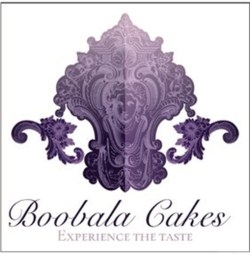by Theresa Happe (https://cakeswebake.com)
 Hey, That’s My Design!
Hey, That’s My Design!
What is copyrighted? Ours is a community of caring and sharing manifested through photos, tutorials and tips contributed online, at cake shows and the classroom setting. When we’re not teaching the tricks of the trade in hands-on classes and in demonstrations, we’re sharing ideas through YouTube, Facebook, blogs and websites. When appreciated and respected, this spirit of generosity gives rise to great new cake artists and the contribution of innovative ideas from its recipients.
Naturally, the distribution of knowledge spawns repetition of techniques and designs by other cake artists and sometimes it’s hard to know what is copyrighted. Instructors expect their students will replicate their techniques, for their goal is to help cake decorators improve their skills. Many take great pride when they watch their students go on to win competitions and gain recognition. However, instructors and cake artists share their photos and experience freely in order to inspire others to create something of their own.

Admiration vs Stealing
Unfortunately, there are some bad apples out there who disregard the common courtesies of crediting the original creators of designs and ideas. Here begins the unpleasant discussion of theft of designs and techniques, false claims and the negative impact they have on our industry.
It’s not uncommon for a customer to approach a cake artist with a photo of a cake found online or torn out of a magazine. It is then up to that cake artist whether he/she replicates someone else’s work or takes inspiration from the cake photo to create something distinctive. What happens with the photo of the cake and whether the original artist is recognized is where the issue begins.
Most cake artists don’t mind if their ideas/designs are used when credit is given. However, websites like Pinterest tend to muddy the waters; sometimes it’s impossible to track down the original artists of a cake photo. I have come across many websites and blogs that have taken photos from Pinterest and credited Pinterest rather than the cake artist. In this situation, had a watermark been applied to the photo, the detective work could have been simplified.
Yet, there are predators out there who will intentionally remove the watermark and claim someone else’s cake as their own. The motive may be recognition or to solicit business from customers. Sometimes the offender is not a member of the cake community at all, rather a webmaster pilfering content in order to monetize it with pay-per-click income and/or affiliate commission.
Blog and website owners have displayed other’s cakes and tutorials as their works of art. Many instructors have devoted time into creating classes their students turn around and teach. Some have invested time and money into creating videos which have been viewed, copied and then distributed for free through YouTube or for a fee on a website or blog. There may be some who unknowingly enjoy the distribution of copied works by these thieves, but many in our industry are taking notice of the crisis and looking for ways to hinder it.
First Hand Experience
Lisa Raffael, Delicious Desserts, Food Network Challenge star and Craftsy instructor, first experienced the theft of her cake photos long before social media came along. While attending a bridal fair and perusing a competitor’s portfolio, she discovered her very own cake photo among those displayed. There was no credit given and when she requested they remove it, she was given an attitude in return. On another occasion, a client came in for a consultation with a flyer of cakes from another competitor. Lisa’s cake photo was among them. She recounts, “Same story as before. No mention of me! I couldn’t contain myself and said, “oh my gosh – that’s my cake!” I showed the couple the original photograph! They were dumb founded.”
More recently, an attractive cake photo Lisa discovered on Pinterest led her to a website where a recreated version of her original cake design existed, again without credit.
Lisa explained how she handles requests to make someone else’s cake:
“With social media, it’s almost expected for clients to bring you pictures of cakes from other designers that they’d like you to recreate. Seeing the pictures is helpful to get an idea of their style, but seeing their invitations, the dress and flowers can also provide inspiration to create their cake. When I do find myself with the bride who “knows the cake she wants”, and shows me a picture, I make it my job to change at least something on the cake to “make it her own” and not completely copy the original design. This is great for two reasons; The bride feels her cake is “her design”, not just a copy, and that I am making her feel special, and I’ve prevented completely copying someone else’s design. My preference, of course, is that each cake be created and designed together with the client for a unique cake.
For the times where a cake is copied for any reason, giving credit to the original designer is proper, professional and the right thing to do. For the times where the original designer is not known, simply mentioning “not an original design” is MUCH better that taking credit for a design that isn’t yours, even if you made the cake.”
Chef Dawn Parrott, CWPC of Dawn Parrott Designs shared what she’s seen happening in the cake world lately: “There is a big problem in the industry with people taking an instructor’s class content, turning around and teaching it. There should be a respect within our industry to give people credit where credit is due and to come up with your own concept. They are out there teaching to become famous and that’s not the right reason to be teaching.”
Hall of Fame cake designer Kerry Vincent has very strong opinions regarding claims being made about the origins of artistic sugar techniques. She comments:
“Many of the artists who try to lay claim to fame for new techniques do it on the backs of inventive creators who have either passed away or retired and are no longer around to defend their reputation or position. Most of these frivolous people were not even born when these beloved techniques evolved. To hear someone say they invented the frill, while actually physically using a Garrett frill cutter is laughable and too absurd for words. Elaine Garrett published the frill in 1963. To mention some of the great ones from many nations who paved the way (but not a complete list by any means): E. M. Berling, Jill Maytham, Le King, Larry Powell, Patricia Simmons and Bernice Vercoe.
Stealing another’s intellectual property and conveniently forgetting where it came from or modifying at a minimum to satisfy the so-said ten per cent copyright requirement isn’t smart and frankly those of us who have been around for decades not only know, but have images and books in our libraries where the techniques were first illustrated. Apparently it is OK these days to short circuit the learning curve; amass a large following on social media with junk conversation and suddenly we have another superstar with no substance in our midst. Why? Not because they have real skills but because they tell a good story that no one bothers to check. A massive following on FB does not necessarily reveal a quality artist just a smart snake oil salesperson beating their drum to the faithful following. This is Band Aid cake art. Editors and producers are also at fault because they are showcasing the cakes at face value, either online, in television or in published media without giving proper credit where it is due or knowing the historical significance.
Personally I will bang the drum for those who have gone before and try to keep their accomplishments alive and I would like to hope that cake artists starting out will take heed, invest time to refine their art before taking to media and social outlets and making unsubstantiated claims while presenting less than stellar techniques: All because they think they can be an instant celebrity. For me, these blowhards who have not paid their dues and conquered challenging techniques before branching out creatively on their own, are a total yawn and not worth a moment of my time.”
Kerry has been cataloging cake decorating techniques and their rightful inventors from a wide variety of reference sources to create a timeline dating back to the 1600s. One has only to do a bit of homework to verify a technique is, indeed, unique.
Be Pro-Active in Protecting Your Work
According to the United States Copyright Law, “Your work is under copyright protection the moment it is created and fixed in a tangible form that it is perceptible either directly or with the aid of a machine or device.” – www.copyright.gov
Registering your work is voluntary, whether it be a photograph or written text. For content published online whether in a blog or website, you may display the copyright symbol or language indicating the content is copyrighted regardless of whether you have filed for copyright protection. The language acts as a deterrent; however, wining a lawsuit against an infringing party can prove difficult if you do not file for copyright protection. Filing serves to create a public record of the content, its publish date and you as the original author.
What You Can Do
- Watermark all images. When possible, layer your logo over the cake so it can’t be removed by cropping the image.
- Find Copies of Your Work Online:
- You can search for copies of your written work for free through Copyscape.com. Enter the URL of the content on your own blog or website in the field provided and Copyscape will return the URLs where substantially duplicated content resides.
- To search for your photo online, Google offers a few different ways to perform a search. You can either upload your photo and Google will return a list of the URLs where your photo is found or you can use the URL of the photo file to search. To perform a search from a website, right click the image and select “copy image URL.” Either visit images.google.com or click the camera icon shown in the search box on any image results page. Paste the image URL and click “search by image” to return results. Alternatively, using Chrome as your browser, you can right click on an image and then select “search Google for this image.”
- Proof of publish date: In the event your original content is discovered on another website and you want to uncover the history of that web content, you can copy the URL of the page where your content has been duplicated, plug it into the search field provided at archive.org and see all the dates where the content of that page was captured. You can also do this with the content on your own website. This feedback may provide the proof you need to show which page existed first and the content present on the page at the time it was posted.
Taking Action
What safeguards and countermeasures do we have as at our disposal as cake artists? The majority of us in the cake community do not possess the financial backing of the music and movie industries. We don’t have legal teams tracking online download and distribution activity nor FBI warnings accompanying our cake designs.
If your copied image or tutorial is discovered on a website, contact the website’s owner and request removal within 30 days. In the past, webmasters have scraped content and pasted it on their own in order to attract traffic. Since Google has been demoting these websites implementing these types of black hat tricks, many have been abandoned and their incoming messages left unmonitored. Should your request be ignored, contact the domain registrar and provide proof of theft. Report the copyright infringement to Google by filling out this form: https://support.google.com/legal/troubleshooter/1114905?hl=en Upon completion, you will be prompted to login to your Google account to submit the request.
Often, you’ll come across a battle on Facebook where a cake artist speaks out, rallies up his/her fans and the perpetrator is intimidated into taking some sort of action. At times, these social battles render success; however, fans should be aware that they may not be cognizant of the entire situation. There have been incidences of fans defending the thief and accusing the original artists of stealing.
Should you decide to join in a battle, do so from a righteous perspective. There are certain ways to verify facts online that should be exhausted prior to engaging in an all-out war. Remember that your words may be seen by thousands of people you don’t know and a wrongful accusation hurts not only the accused, but may come back to haunt you if you are wrong.
If you are a victim of theft, consider approaching the offender privately first through social media or his/her website contact form to give the offender a chance to right the situation. Should your efforts not prove fruitful, then taking public action may be necessary.
Give Credit Where Credit is Due
- Should you use a unique design created by another cake artist, be sure to give credit to that artist.
- If you would like to use another cake artist’s photo, ask permission first and provide credit. Most cake artists are happy to share as long as the photo is not being used to market your own classes.
- Keep in mind that if you create a cake in someone’s class and enter it into a competition, the judges may be familiar with that instructor’s work and know the instructor likely assisted you in its creation. Instructors teach their techniques so you can take them and incorporate them into your own designs. It’s one thing if you are showing the class cake to a customer, but when you put someone else’s design ideas out there as your own, it’s a bad reflection on your character and disrespectful of the instructor who invested his/her time passing along valuable knowledge.
- Do your homework before claiming to have invented a new technique. Putting a slight twist on a technique invented by another cake artist in order to enjoy recognition may reap benefits in the short term with ignorant fans and followers but will only earn you the disrespect of cake artists who have been in the business long enough to recognize the rip off.
We can strive to create an awareness to prevent the ongoing theft of another’s work and preserve our treasured spirit of giving, but there will always be those incidents in which the perpetrator is aware of his/her “crime” in which case we have limited resources to rectify the situation.
In reality, without filing for copyright protection, there is little we can do to fight an individual who won’t respect the request to remove a photo or rectify an offense. Even with copyright protection, fighting a perpetrator can drain one’s financial resources. The posterity of our community relies on appealing to one’s sense of moral obligation and instilling respect for others who have invested long hours designing unique works of art, videos and classes. In order for the cake world to thrive, we must appeal to the conscience of the potential copycat to do the right thing so we may continue to enjoy the wealth of information shared by our community.
Theresa Happe is the Executive Editor, Edible Artists Network; Director of Marketing, Marvelous Molds; and author of CakesWeBake.com and Cake-Decorating-Corner. com.

